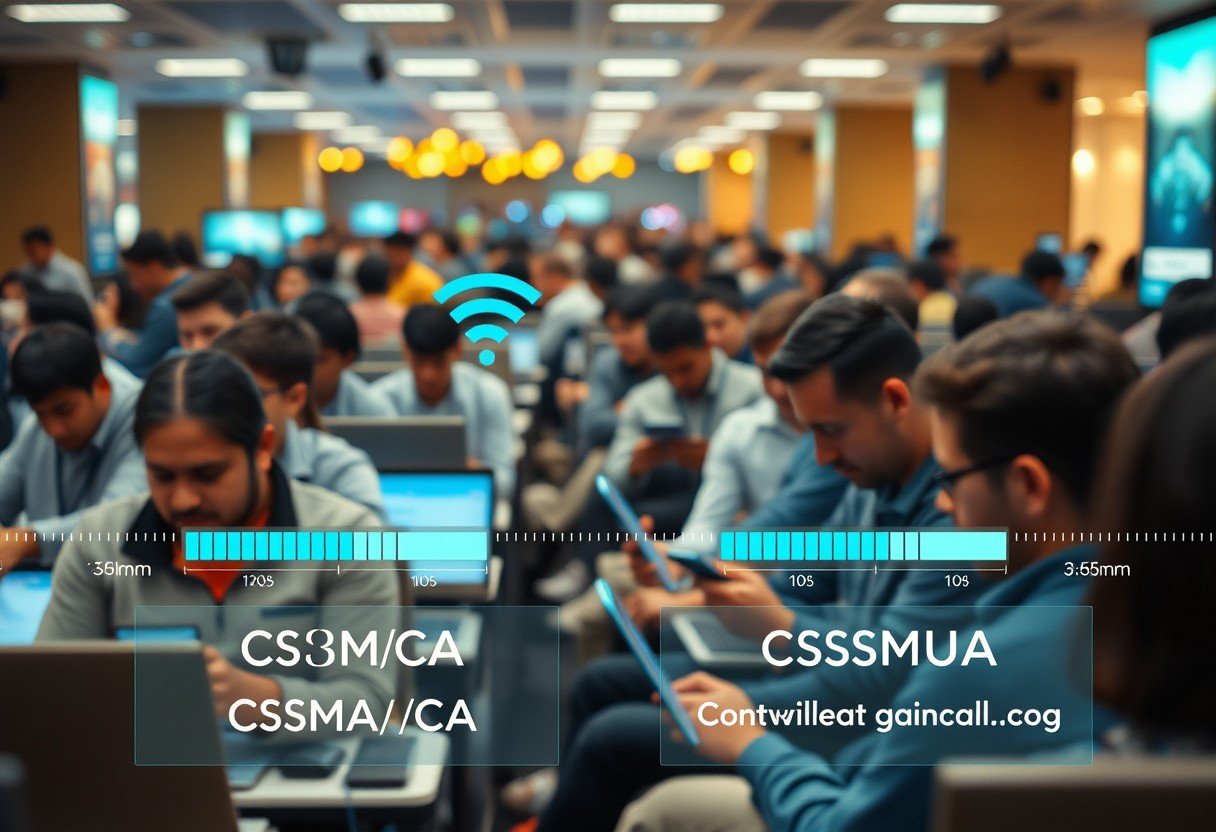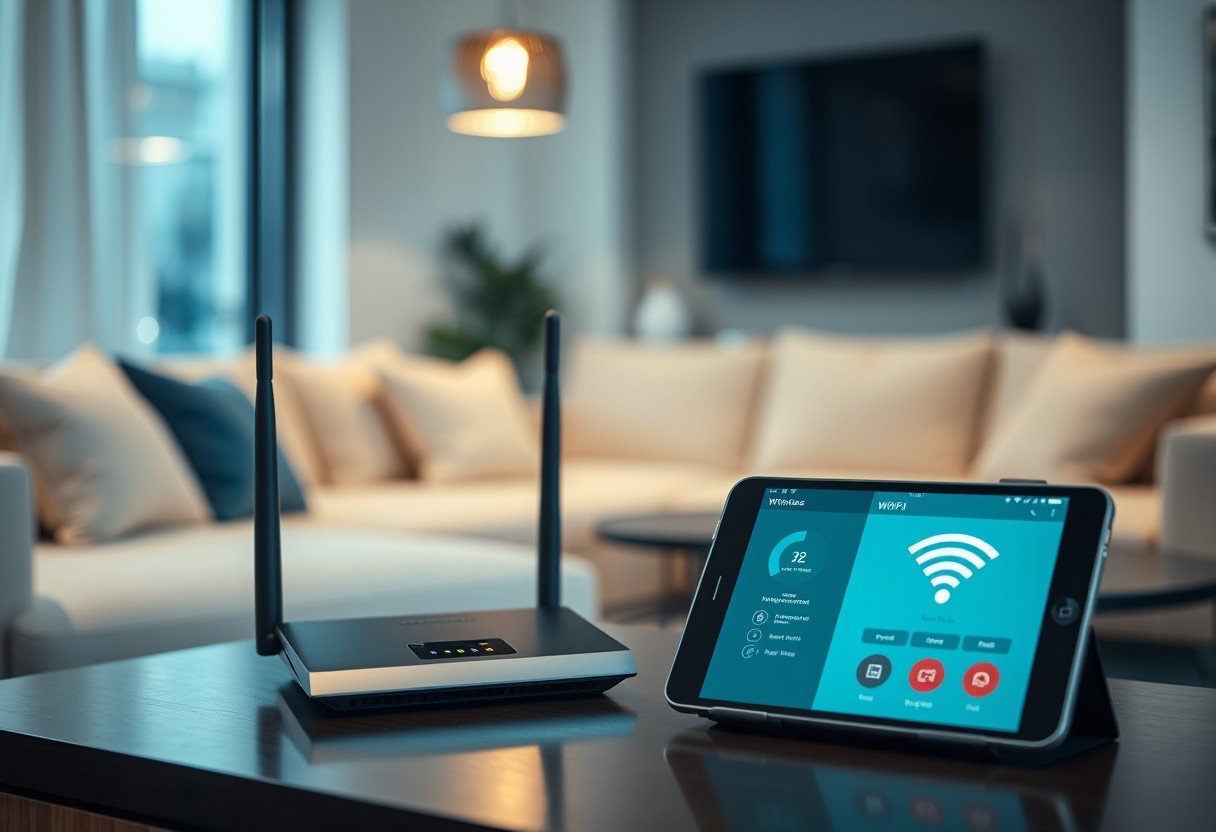Contention based access decides who talks on a Wi Fi channel, where devices share air time at home, office, and public spaces. It works by listening first, waiting when busy, and then sending. You will see it every day in Wi Fi when phones, laptops, and sensors try to share the same channel. It matters because it affects speed, delay, and reliability.
Why Contention Matters in Wi Fi
Every Wi Fi device uses the same channel at a time, so they must take turns. When too many devices try to speak, frames can collide and get lost. That means retries, extra delay, and lower throughput for everyone.
Good contention control turns busy air time into fair air time so each device gets a workable share.
IEEE 802.11 defines how this sharing works using a method called CSMA CA. It is the default for Wi Fi and is used in homes, schools, offices, stores, and stadiums.
In dense places like apartments and malls, the number of nearby networks raises contention. Careful channel planning and modern features keep performance stable as the crowd grows.
How CSMA CA Works in Simple Steps
CSMA CA means Carrier Sense Multiple Access with Collision Avoidance. Devices listen to the channel, wait for gaps, and randomize their send time so two devices do not start at once.
The standard method used in Wi Fi is called the Distributed Coordination Function, defined in the IEEE 802.11 specification.
- Listen to the channel. If it is idle for a short time, move to the next step.
- Start a random backoff counter made of small time slots.
- Count down by one each idle slot. Pause the counter when the channel gets busy.
- When the counter reaches zero, send the frame.
- Wait for an immediate acknowledgment from the receiver.
- If no acknowledgment arrives, pick a larger random window and try again.
This random backoff is the heart of collision avoidance because it spreads out send times across devices.
RTS and CTS To Handle Hidden Nodes
A hidden node is a device that you cannot hear, but the access point can. Two hidden nodes may talk at the same time and cause a collision at the access point. Request To Send and Clear To Send solve this by reserving the air before the real data frame.
With RTS and CTS, a sender asks for permission to send, the access point replies with a short clear message, and nearby stations set a timer to stay quiet. Many vendors set a high RTS threshold by default so small frames skip it. In busy or obstructed spaces, lowering the threshold for large frames can reduce collisions and improve goodput.
Use RTS and CTS when you see many retries from clients that sit far apart or behind walls.
Backoff, Interframe Spaces and Fairness
Wi Fi sets tiny waiting gaps between frames called interframe spaces. Short Interframe Space is used for quick replies like acknowledgments, while longer gaps are used before new transmissions by other devices. These gaps enforce order and reduce talk overs.
The contention window controls how wide the random backoff can be. After each failed try the window grows, which lowers the chance of another clash. When a frame is finally acknowledged, the window shrinks back to normal.
Quality of Service in Wi Fi, also called EDCA or WMM, gives voice and video smaller waiting times and smaller contention windows. That is why calls and streaming often feel smooth even when many devices are active.
By tuning waiting times and window sizes, Wi Fi balances fast access for priority traffic with fair access for all clients.
Comparing Contention Methods Across Networks
Not all networks share a channel the same way. The table below places common methods side by side and explains how they fit Wi Fi design.
| Method | Where It Is Used | How It Manages Access | Notes For Wi Fi |
|---|---|---|---|
| ALOHA | Early radio networks | Send anytime, retry on loss | Too many collisions for modern Wi Fi needs |
| CSMA CD | Wired Ethernet | Detects a collision while sending | Not useful in Wi Fi because devices cannot listen while they talk |
| CSMA CA | Wi Fi IEEE 802.11 | Listens, waits, randomizes, and expects acknowledgment | Baseline for all Wi Fi generations |
| TDMA | Cellular and fixed links | Time slots scheduled for users | Used in some proprietary Wi Fi backhaul gear |
| OFDMA | Wi Fi 6 and later | Splits a channel into small resource units | Lets many users share the same channel at once |
CSMA CA remains the base layer for fairness, while OFDMA adds group scheduling on top to boost efficiency in busy places.
The Wi Fi Alliance states Wi Fi 6 can deliver up to four times higher average throughput per user in dense environments compared to Wi Fi 5 under similar conditions. This gain comes mainly from OFDMA and better scheduling.
Modern Improvements in Wi Fi 6 and Wi Fi 7
Wi Fi 6 adds OFDMA, uplink and downlink multi user MIMO, target wake time for battery savings, and BSS coloring to reduce co channel contention between overlapping networks. These tools cut overhead and make crowded air more usable.
Regulators in the United States opened the 6 gigahertz band for unlicensed use, adding as much as one thousand two hundred megahertz of new spectrum. More clean channels mean fewer neighbors on the same channel and fewer collisions.
Wi Fi 7 brings multi link operation so devices can send on two bands at once, wider three hundred twenty megahertz channels in 6 gigahertz, and faster scheduling. By pairing CSMA CA with smarter scheduling, new standards raise speed while keeping delay predictable in dense homes and offices.
These features are defined in the IEEE 802.11 standards family and vendor tests show large gains in busy networks, especially for short frames like voice and small data bursts.
Practical Setup Tips To Reduce Contention
Small changes in design and settings can cut retries and boost real throughput. Start with clean channels, then let modern features handle the heavy lifting.
- Use the 5 gigahertz and 6 gigahertz bands when possible to avoid crowded 2 gigahertz space.
- Plan channels so nearby access points do not overlap on the same channel.
- Enable band steering and airtime fairness on supported access points.
In large rooms with many walls, lower transmit power on access points to shrink cell size and reduce overlap. If you see many hidden node symptoms, test a lower RTS threshold for big frames and measure retries before and after. Keep client drivers and access point firmware current to get fixes and the latest Wi Fi features.
Measure before and after each change, using retry rate, throughput, and latency, so you know what truly helps.
FAQ
What Is CSMA CA in Wi Fi and why is it used?
CSMA CA is the method Wi Fi uses to share a channel. Devices listen, wait, and randomize send times to avoid collisions, then expect an acknowledgment to confirm delivery.
How do RTS and CTS fix the hidden node problem?
RTS and CTS reserve the air for a short time so hidden devices stay quiet. This lowers collisions at the access point and improves goodput when clients cannot hear each other.
Is CSMA CD used in Wi Fi like in Ethernet?
No. In Wi Fi a device cannot detect a collision while it is sending, so Wi Fi uses collision avoidance instead of collision detection.
What settings help voice and video in busy networks?
Turn on QoS with WMM or EDCA so voice and video get shorter waits and smaller contention windows. This reduces delay and jitter during calls and streams.
How does Wi Fi 6 reduce contention in crowded places?
Wi Fi 6 uses OFDMA and multi user MIMO to serve many users at once. It also uses BSS coloring to ignore far away co channel traffic, which improves channel reuse.
Will moving to 6 gigahertz help my network?
Yes if your devices support it. The 6 gigahertz band offers many clean channels, which lowers overlap with neighbors and reduces contention for air time.









Leave a Comment